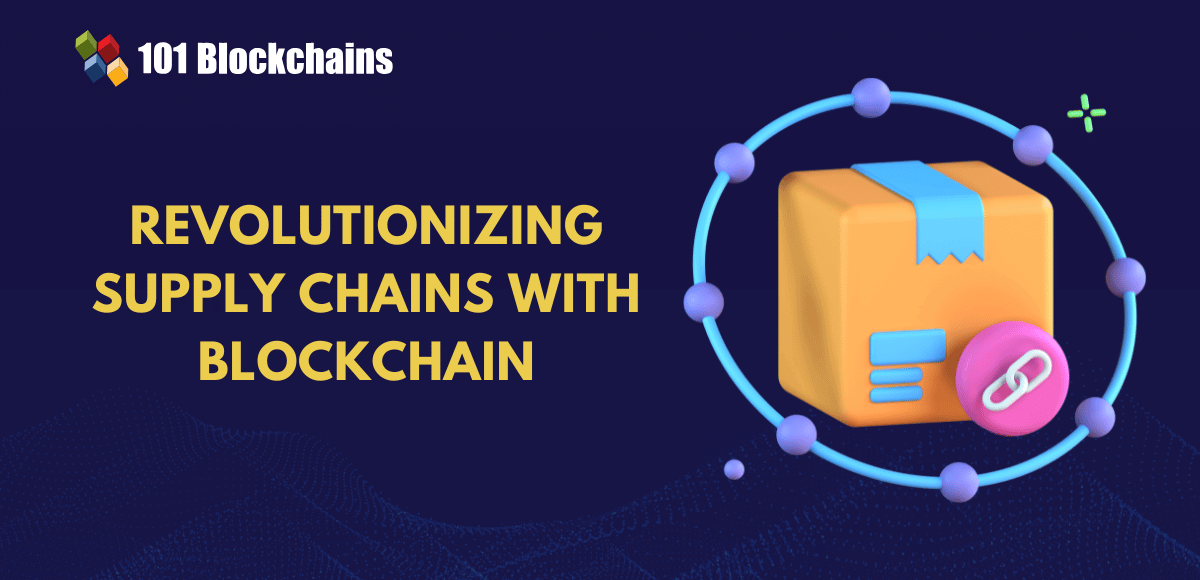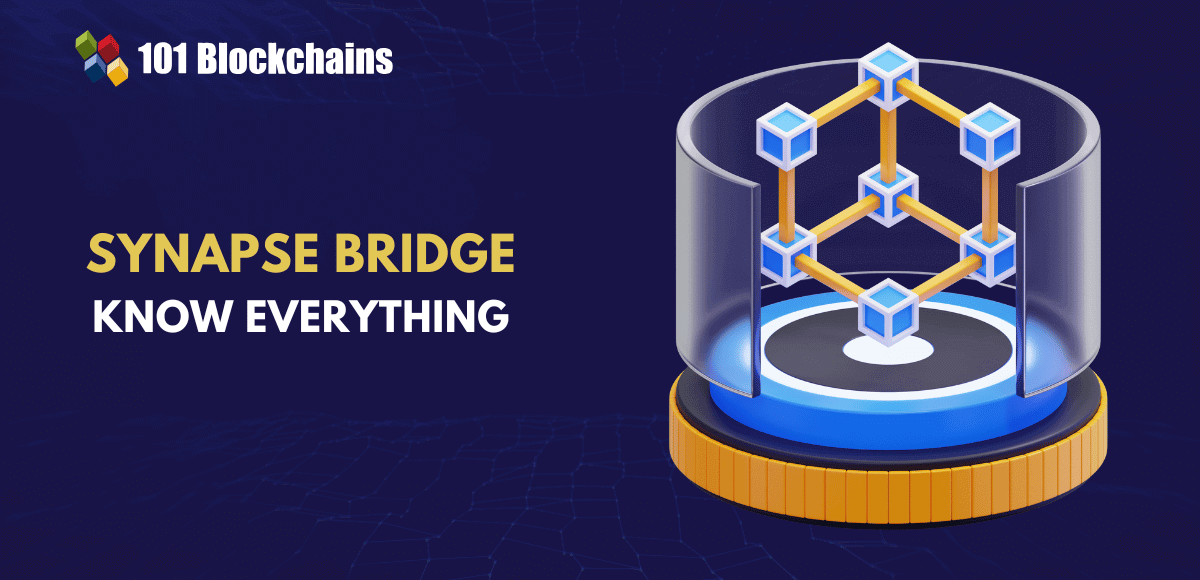Learn how blockchain truly works, master key definitions, and uncover what makes smart contracts so "smart." Dive into the fundamentals, gain valuable insights, and start your blockchain journey today!

- Blockchain
Georgia Weston
- on September 05, 2023
What is Proof of Authority (PoA) in Blockchain?
Consensus mechanisms are an integral element in the working of blockchain technology. The most popular consensus algorithms, such as Proof of Work and Proof of Stake consensus, have become prominent terms for blockchain professionals. Interestingly, the outline of new consensus algorithms, such as Proof of Authority explained for beginners, shows that Proof of Stake and Proof of Work are only the beginning. Many new consensus algorithms have emerged as noticeable additions in the blockchain landscape with promising improvements.
The Proof of Authority algorithm is one of the latest additions among popular consensus mechanisms, which has gained recognition for offering better energy efficiency in comparison to Proof of Stake. On top of it, Proof of Authority or PoA ensures limited consumption of computational resources, which guarantees better performance than other consensus mechanisms. The following post offers you an introduction to Proof of Authority consensus and how it works.
Build your identity as a certified blockchain expert with 101 Blockchains’ Blockchain Certifications designed to provide enhanced career prospects.
Definition of Proof of Authority
The first thing you need to understand Proof of Authority coins refers to the definition of the algorithm. Proof of Authority, or PoA, is a consensus algorithm that offers an energy-efficient solution for creating private blockchains. The term was introduced by co-founder of the Ethereum blockchain, Gavin Wood, in 2017. What is the special highlight of Proof of Authority which separates it from other consensus algorithms? The answers to ‘How does proof of authority work’ would showcase that machines would have to earn the privilege of creating new blocks through a strict evaluation process.
Therefore, proof of authority consensus can ensure that trustworthy validation machines can safeguard PoA blockchain networks. The system moderators serve as pre-approved participants responsible for checking blocks and transactions on a blockchain network. Another important highlight of a Proof of Authority blockchain is the assurance of better scalability. Proof of Authority model could provide scalability as it uses a limited number of block validators. One of the popular examples of blockchains using Proof of Authority consensus mechanism is the VeChain or VET blockchain.
Want to learn the basic and advanced concepts of Ethereum? Enroll Now in Ethereum Development Fundamentals Course!
Working of Proof of Authority
The next important highlight in the introduction to PoA points directly at the working mechanism. PoA is a consensus mechanism that relies on allowing authorized entities to validation of transactions in blockchain networks. The Proof of Stake vs. Proof of Authority consensus comparison would showcase that PoA aims at offering a scalable and efficient alternative for creating private blockchain networks.
Proof of Work and Proof of Stake consensus algorithms rely on computational power and the amount of cryptocurrency stake as important requirements for validating transactions. On the contrary, Proof of Authority consensus relies on identity as an important requirement for validation.
The working of Proof of Authority consensus shows that it offers a more scalable and efficient consensus algorithm. It is also important to emphasize the necessity of trust and recognition for establishing the identity of nodes. Let us dive deeper into the mechanisms underlying the working of PoA.
Wondering how PoW and PoS are different from each other? Read here for PoW Vs. PoS: A Comparison Between Two Blockchain Consensus Algorithms now!
Working Mechanisms of Proof of Authority
Proof of Authority consensus is applicable for permissioned blockchain networks, and the PoA algorithm delivers unique value advantages. You can find answers to “What are the benefits of Proof-of-Authority?” by diving deeper into the unique mechanisms powering the consensus mechanism. The distinctive highlight of PoA is the selection of a set of validators who would take responsibility for the consensus mechanism. The validators or ‘authorities’ also have their identities verified, and the whole network knows their identity.
Upon the proposal for a new transaction in a blockchain network, the new transaction is communicated to all validators. The authorities verify the transaction independently and ensure that it follows the important rules of the network and conforms to the conditions for validity. When the majority of validators or authorities agree on the validity of a transaction, the transaction will be added to the new block.
The most important highlight of a Proof of Authority example would point at the selection of the validator chosen for creating the block. The choice of validator depends on a consensus algorithm, such as weighted random selection or round-robin selection. After creation of the new block, it can be broadcasted across every network node.
Each network node verifies the integrity of the block independently by ensuring that it features valid transactions and has the proper links to the previous block. When the majority of nodes agree on the validity of a block, it can be included in the blockchain.
Start your blockchain journey Now with the Enterprise Blockchains Fundamentals
Terms and Conditions for Proof of Authority
The introduction to Proof of Authority explained would also include a description of its working mechanism. Preapproved validators utilize software for organizing transactions into different blocks. It is important to note that the process of selecting authorities or preapproved validators is automated. However, validators must comply with certain conditions to ensure eligibility to participate in a consensus algorithm. The conditions could differ from one system to another. At the same time, it is important for preapproved validators to follow three fundamental requirements.
- Validators should have good moral standards to validate their credibility, and they should not have any criminal records.
- The identity of a validator must go through formal validation on the network, with the ability to cross-check information in public domain. Therefore, the real identities of the authorities are confirmed on the network.
- Validator candidates should have the commitment to investing money and staking their identity on the Proof of Authority blockchain network. The rigorous process of selecting a preapproved validator ensures reduced possibilities of choosing controversial validators. On top of it, the validator selection process ensures long-term commitment from validators.
As you can notice, the core element in the reputation mechanism for validators revolves around trust in the identity of the validator. The complex scrutiny process for validators removes weak candidates and also ensures that all validators follow similar procedures, thereby guaranteeing reliability and integrity of the system.
Curious to learn about blockchain implementation and strategies? Enroll Now in Blockchain Technology – Implementation And Strategy Course!
Example for Proof of Authority
The fundamentals of PoA showcase that it is an efficient and scalable alternative to Proof of Stake and Proof of Work algorithms. You can find examples of Proof of Authority coins such as Palm Network, Xodex, and Bitgert. However, a better explanation for PoA comes in the form of a simple example of reputation rating on an e-commerce website.
All the sellers on an e-commerce website must follow the rules established by the platform as well as the feedback of buyers. The reputation of sellers depends on obtaining positive feedback, which would reflect on their score in terms of buyer’s trust. In the long run, the trust of buyers would also reflect on the reputation of the e-commerce platform.
On the other hand, sellers with lower feedback ratings would have to encounter certain penalties, such as warnings. In addition, the e-commerce platform could also restrict certain seller privileges. The e-commerce website serves as a perfect Proof of Authority example with an explanation of how the reputation mechanism works. The website would allow reputed sellers to continue selling while weeding out the questionable sellers. Similarly, the reputation of validators is a critical element in the working of Proof of Authority consensus.
The example shows that users who could become validators in the Proof of Authority algorithm could also receive better incentives for maintaining a higher reputation rating. Validators would have the motivation to maintain stability in the transaction process to avoid any damage to their reputation. Since the real identities of the validators would be at stake, preapproved validators are more likely to value their role in the PoA blockchain networks.
Aspiring to make a lucrative career as a blockchain expert but not sure how? Check the detailed guide Now on How To Become A Blockchain Expert
Proof of Authority Consensus Requirements
The consensus requirements in the PoA networks refer to the conditions that a blockchain should follow for validating a proof of authority. Consensus requirements primarily involve a specific level of agreement among network participants. In addition, it also focuses on integrity and security of the proof. Some examples of consensus requirements include secure cryptographic algorithms for ensuring integrity of the proof and use of digital signatures.
Benefits of Proof of Authority Consensus
The review of answers for “What are the benefits of Proof-of-Authority?” would emphasize certain themes such as higher efficiency and scalability. First of all, proof of authority consensus is more energy-efficient in comparison to PoW and PoS consensus algorithms. How? PoA involves limited consumption of computational resources as it does not need miners to solve complex mathematical problems. Therefore, PoA networks could work with less electricity, thereby reducing operational costs and helping the environment.
The Proof of Authority algorithm also guarantees better security alongside stability in comparison to Proof of Stake and Proof of Work consensus mechanisms. It works by trusting a set of preapproved validators who are selected through a comprehensive vetting process on the network.
Therefore, the Proof of Authority consensus could serve better reliability than the anonymous stakers and miners. On top of it, Proof of Authority consensus also guarantees customization as the validators could be changed according to the network’s requirements. In addition, Proof of Authority also allows the flexibility for modifying the rules for validating transactions.
Does Proof of Authority Consensus Have Any Setbacks?
Yes, Proof of Authority consensus also has some setbacks. First of all, Proof of Authority brings the element of centralization as the Proof of Authority blockchain relies on preapproved validators for transaction approval. Centralization could lead to lesser accountability and transparency in the network, as validators would gain more control over the blockchain. On top of it, centralization could also open up the network to vulnerabilities in its security.
Another notable limitation of the Proof of Authority consensus is the limited resistance to censorship. Validators could choose the transactions they want to block or reject, thereby preventing the participation of certain parties in the blockchain network. At the same time, a Proof of Authority example would also showcase how it can be limited in terms of scalability. The PoA consensus has a limited number of validators, thereby limiting the number of transactions. Pre-selection of validators restricts access, thereby making them unsuitable for public networks.
How is Proof of Authority Different from Proof of Stake?
Another common aspect in the discussions about Proof of Authority revolves around the “PoS Vs PoA” debate. Proof of Authority and Proof of Stake have their share of advantages and disadvantages, thereby pitting them against each other in strong competition. For example, PoA can reduce the power required for running the network with easier validation. On the other hand, PoS can provide the advantage of decentralization, which could encourage individual participation.
PoA is better than Proof of Stake in terms of efficient use of resources. Validators would not require specialized hardware to maintain the network. Proof of Authority also ensures better resistance to security attacks than PoS or PoW consensus. For example, the answers for how does Proof of Authority work would show that the network relies on preapproved validators. Therefore, it is immune to the influence of any malicious actor for imposing a 51% attack.
Conclusion
The PoA consensus mechanism is a promising alternative to Proof of Stake and Proof of Work algorithms. Proof of Stake consensus emerged as an energy-efficient alternative to Proof of Work consensus. However, Proof of Authority showed that the change in reputation mechanism of the validators could introduce energy efficiency.
The fundamentals of Proof of Authority explained for beginners showed that it features a simple mechanism for selecting preapproved validators. It is also important to learn that PoA also has setbacks, such as a lack of scalability. On top of it, Proof of Authority also has the element of centralization.
However, it also ensures better security against common attacks, such as 51% attacks, irrespective of centralization. In addition, the credibility of validators depends on their real-life identity, thereby guaranteeing better results than other consensus algorithms. Start learning more about PoA consensus and the popular examples which can explain the working of PoA consensus. The new consensus algorithm could help you in achieving better efficiency and performance than existing algorithms. It might serve as a new point of transformation in the blockchain landscape.
*Disclaimer: The article should not be taken as, and is not intended to provide any investment advice. Claims made in this article do not constitute investment advice and should not be taken as such. 101 Blockchains shall not be responsible for any loss sustained by any person who relies on this article. Do your own research!






